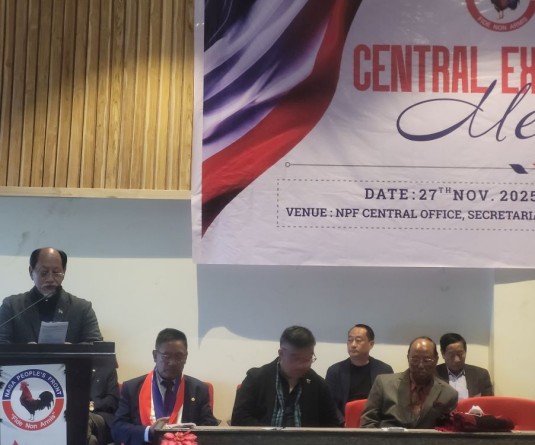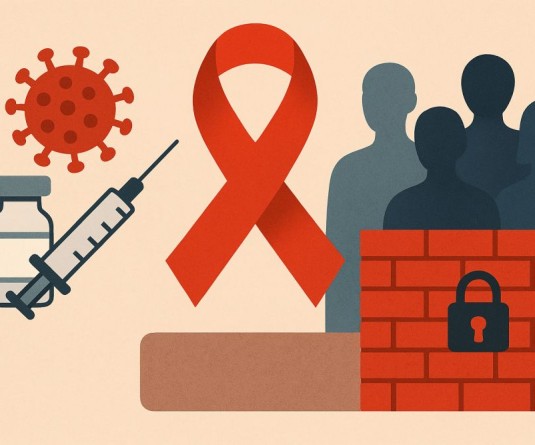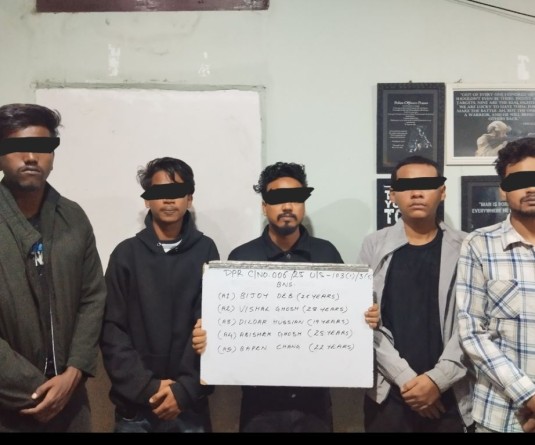
KOHIMA: The National Vector Borne Disease Control Programme (NVBDCP), Directorate of Health and Family Welfare Nagaland has stressed on the need for continued investment and sustained political commitment for Malaria prevention and control. A press note from the NVBDCP informed that increased political commitment and expanded funding have helped reduce malaria incidence by 25% globally, and 31% in Africa. However, it stated that emerging drug and insecticide resistance threaten to reverse recent gains.
April 25 is World Malaria Day
World Malaria Day is observed on April 25 worldwide in order to energize commitment to fight Malaria. The theme for the day for 2014 and 2015 is ‘Invest in the future, Defeat malaria.’ It aims to facilitate countries in affected regions to learn from each other's experiences and support each other's efforts. It further hopes to encourage new donors to join a global partnership against malaria; research and academic institutions to flag scientific advances to both experts and the general public; and for international partners, companies and foundations to showcase their efforts and reflect on how to further scale up interventions.
World Malaria Day is observed on April 25 worldwide in order to energize commitment to fight Malaria. The theme for the day for 2014 and 2015 is ‘Invest in the future, Defeat malaria.’ It aims to facilitate countries in affected regions to learn from each other's experiences and support each other's efforts. It further hopes to encourage new donors to join a global partnership against malaria; research and academic institutions to flag scientific advances to both experts and the general public; and for international partners, companies and foundations to showcase their efforts and reflect on how to further scale up interventions.
The NVBDCP stated that for about a decade, the global fund for AIDS, TB, and Malaria (GFATM), Government of India (GOI), and the State government, through the National Vector Borne Disease Control Program (NVBDCP), has been jointly investing in the control of vector borne diseases in the state of Nagaland. Contractual employees in the capacity of state and district consultants, Malaria Technical Supervisors, Laboratory Technicians, Data Entry Operators, etc have been recruited and trained through GFATM support.
It added that the GoI has employed 200 contractual multipurpose workers (MPWs) for active surveillance in all the districts. Distribution of Long Lasting Insecticide Treated Nets (LLINs), Indoor Residual Spray (IRS) with DDT, and biological support through larvivorous fish are some of the control measures carried out by the program. The central government also recently introduced bivalent rapid test kits for diagnosis and ACT-AL medicines for treatment of falciparum malaria. Awareness on vector borne diseases are carried out throughout the year through miking, distribution of IEC materials, advocacy workshops, use of print and electronic media, etc.
It however stated that “we are not there yet.” “More investments need to be done at all levels from the government and community to the individual. Malaria is as much an environmental and socio-economic issue as is a medical issue,” it asserted. It stressed on the need for municipals, village councils, allied departments like PHED, Agriculture, RD, Urban, Forest, DIPR, etc and also various NGOs and individual citizens to put in efforts.
Globally, 3.3 billion people in 106 countries are at risk of malaria. In 2012, malaria caused an estimated 627,000 deaths, mostly among African children. Asia, Latin America, and to a lesser extent the Middle East and parts of Europe are also affected.
World Malaria Day sprung out of the efforts taking place across the African continent to commemorate Africa Malaria Day. It is one of eight official global public health campaigns currently marked by the World Health Organization (WHO), along with World Health Day, World Blood Donor Day, World Immunization Week, World Tuberculosis Day, World No Tobacco Day, World Hepatitis Day and World AIDS Day.
World Malaria Day was established in May 2007 by the 60th session of the World Health Assembly, WHO's decision-making body. The day was established to provide "education and understanding of malaria" and spread information on "year-long intensified implementation of national malaria-control strategies, including community-based activities for malaria prevention and treatment in endemic areas."






